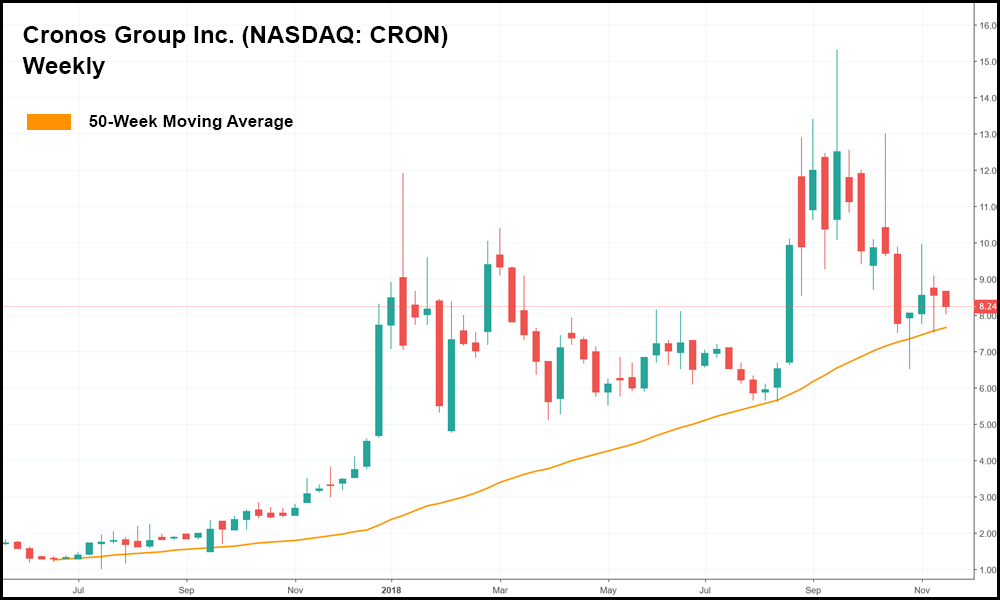Initial Sales Numbers out of Canadian Cannabis Companies Has Traders on Edge
Pot stocks just haven’t been able to catch a break since their debut as a legalized commodity back in October. The latest bad news for bulls came last week, as five of the largest marijuana producers reported weak sales, while others didn’t post earnings at all, leaving many to wonder how bad the numbers could’ve been to let the figures go unpublished.
But that wasn’t even the half of it, as the industry was run ragged by more bad news:
- Canopy growth was forced to destroy its own crops in September due to delays of acquiring purchasing licenses from Health Canada. They were also plagued with infrastructure issues.
- Pete Young, a cannabis grower with Indiva Inc., noted that crop failure would happen as long as hasty expansions, limited knowledge, and weak infrastructure continue to plague the new market.
- According to industry analysts (ours included), producers are experiencing major delays as they attempt to comply with federal regulations, especially as it relates to the excise tax stamps which go on all packages of commercialized marijuana. According to Tilray CEO Brendan Kennedy, only one company in Canada can apply the glue for the stamps properly.
Yes, you heard that right. A lack of experience applying stamp glue is a leading cause of worse-than-expected quarterly earnings out of Canada’s newest commodity market.
The State of the Market After All This Bad News
All major cannabis stocks took serious hits over the last few weeks, and many are retesting supports at their 50-day moving averages. Cronos Group Inc. re-tested last week and saw a bounce.

While the 50-day has continued to act as support, that may not be the case over the coming weeks and months, as growing pains continue to cause havoc in the market and traders get cold feet about owning such untested assets.
One important thing to remember when trading these markets is that many indicators aren’t as effective as they would be with more established stocks. Long-term support and resistance lines are still in their formation periods, as are long-term moving averages (such as the 100-day and 200-day—essential tools for the investor), which are barely useful when a stock has only been around for a couple years.
Aurora Cannabis is a perfect example of this when we zoom out to view the monthly candlesticks. This is literally all the history we have of one of the most valuable cannabis companies in the world.

Two Stories and One Piece of Evidence-Based Advice for Potstock Investors
The big question on investor’s minds is whether the largest cannabis companies are worthy of their large market caps. While the future of these companies could be bright, that hope is too insubstantial to be considered a solid buy from long-term investors. Speculators control this market right now, and these individuals don’t mind operating in a newly-legalized and untested commodity market where the largest companies face limitations of sales and revenue data, infrastructure, and physical assets.
This brings up an important point: we must remind ourselves that this is the very beginning of legalized, commercialized marijuana.
And because of that, we can point to two examples that might help build some context around where these cannabis companies are and what their futures could be.
The first example is Bitcoin. As Bitcoin was peaking in December 2017, the news and hype around it was deafening. And the biggest hype-story of the most-hyped month was the legitimization of bitcoin by two major futures groups in the U.S.
But within a week of those futures “legitimizing” bitcoin, the price of bitcoin crumbled. The speculation over its legitimacy had brought it to its all time high. But as soon as it achieved that status, traders fled.
Cannabis stocks and the wild speculation leading up to their legalization show a very similar line of thinking. Speculators drove the price up initially, but now long-term investors are looking for a place to keep the market moving forward.
The second example is Tesla. The hype around Tesla back in 2013 sent speculators flocking to the stock before Musk produced a single Model 3. Even today – with all the new infrastructure in place and 5,000 Model 3’s being produced every week – Tesla has a long way to go before the ghost of “production hell” fades from the memories of traders who’ve been burned by the wild volatility of Tesla.
Like Tesla, pot companies face an uncertain future, with questions over the popularity of the commodity they sell and concerns with infrastructure and transportation. That said, we expect many investors to buy into the current and—we suspect—temporary bearish sentiment plaguing this adolescent market. With the immaturity also comes a massive opportunity for short-term traders looking to capture the large swings in price.
Being able to trade up-and-down the cannabis market is arguably its most attractive feature at the moment, and adventurous investors looking to pocket gains on the industry’s volatility will still have their chances for the foreseeable future.







